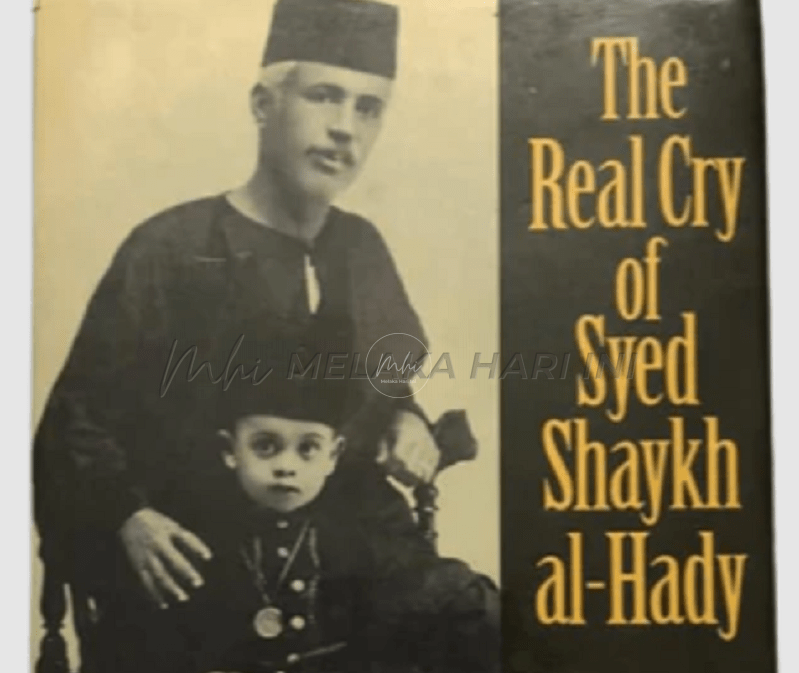
Riau, the Cradle of Malay Journalism: The Spirit of Syed Shaikh al-Hady
The monthly al-Imam (1906-08) has been said to be the most studied periodical in the nation’s journalism history. But few realized that it is more than the “first radical Malay-language newspaper;” and its founder Syed Shaykh bin Ahmad bin Hasan bin Saqaf al-Hady more than the editor, writer, reformist and educationist.
Born in Melaka in 1867, and initially educated at a religious school in Kuala Terengganu, Syed Shaykh was later taken to Pulau Penyengat, Riau, to continue his schooling – the setting was the palace and the Riau royal family.
Then Riau was the political, social, religious and literary centre of the Malays before the British and the Dutch colonial spheres embraced the area. The Malay spoken in Johore-Riau for example, was considered to be the standard Malay of British Malaya as well as of the Dutch Indies until 1928. Raja Ali Haji (circa 1809 – 70) was one of Riau’s famous sons. He was the author of Silsilah Melayu dan Bugis dan sekelian Raja-rajanya (Genealogy of Malay and Bugis Princes), and Tuhfat al-Nafis (The Precious Gift), among others. His son, Raja Hasan, and his daughters Raja Kalzum and Raja Safiah, wrote poetry in their pastime.
Syed Shaykh became the favourite of the palace and was adopted by as a son of Raja Ali Kelana, half-brother of the sultan. Since the time of Raja Ali Haji, the Riau royal family had been encouraging the spread of Islam in general and the pilgrimage traffic in particular. It was said that Syed Shaykh was taken to Mekah and Cairo several times, and purportedly met Muhammad ‘Abduh, the Egyptian modernist and reformer. He also met Muhammad Rashid Rida, Muhammad Abduh’s chief disciple and leader of the al-Manar group. Through Rashid Rida, Syed Shaykh learnt on the functions of journalism. He was inspired by Rashid Rida’s use of the periodical press as instrument for change and reform.
Then there was also the environment provided by the Persekutuan Rushdiyyah, formed in Pulau Penyengat in the 1890s. The club became the focus of anti-Dutch sentiments. According to Linda Tan, through her interviews and examining original writings of Syed Shaykh in “Syed Shaykh: His Life and Times” in Alijah Gordon’s The Cry of Syed Shaykh al-Hady (1999), there, he learnt from such scholars like Haji Husain Palembangi and Haji Saleh Minangkabaui.
Against the backdrop of the deteriorating relationship between the Sultan and the Dutch colonial authorities, Syed Shaykh gathered a group of men who eventually formed the magazine al-Imam (The Leader). Shaykh Muhammad Tahir Jalaluddin al-Azhari, became the first editor. The others were Shaykh Muhammad bin Salim al-Kalali, a merchant from Acheh, Syed Muhammad bib Akil (‘Aqil), Haji Abbas bin Mohd. Taha, Shaykh Awad bin Saidin, and Syed Shaykh himself.
Al-Imam was a pioneer for a new form of journalism in the Malay Archipelago. Among its purpose as declared by its founders was to impart knowledge to their Muslim brethren in the East; to give advice and show the way to be a good Muslim; to remind those who are idle, awaken those who are asleep and lead those who have lost their way. Al-Imam was a radical departure not only in the context of the Malayan Islamic scene, but also in the journalistic enterprise. It was critical of dogmatic and orthodox views. Their followers were given the pejorative stamp Kaum Muda (The Young Faction); and Syed Shaykh was known as the Ketua or Khalifa Kaum Muda (The Leader of the Kaum Muda).
With the demise of al-Imam after two years, due to the lack of funds, Syed Shaykh moved to Johore, and then Melaka. He had already earned his reputation as the Ketua Kaum Muda, so much so that his Madrasah al-Hady in the kampung of his birth was avoided. According to Linda, undaunted, he moved to Pulau Pinang to open the Madrasah al-Mashhur in 1916.
It was in Tanjong, Pulau Pinang, that Syed Shaykh, 18 years after al-Imam’s demise, created al-Ikhwan (The Brethren), in September 1926. The year after, he started the Jelutong Press. The initial contributors to the monthly were Shaykh Tahir Jalaluddin and Pandita Za’ba; later followed by Harun Aminurrashid, author of Panglima Awang, and Buyong Adil, co-author of Sejarah Alam Melayu.
It was said that the years Syed Shaykh spent in Riau and Singapura subjected him to influences that moulded the whole course of his life. Linda emphasizes that Riau “was so important to his development that without Riau there might not have been a Syed Shaykh of the dimensions which he attained.” Raja Ali Haji, historian and writer, left a legacy to Syed Shaykh through Raja Ali Kelana, Syed Shaykh’s adopted father, as well as his teacher. Syed Shaykh, upon seeing Raja Ali Haji’s incomplete Kitab Pengetahuan Bahasa (A Book of Linguistic Knowledge) in Pulau Pinang, immediately reviewed it in al-Ikhwan. The book was published in Singapura in 1927, and Syed Shaykh had read the manuscript 40 years earlier.
Without Riau too, there would also not be al-Imam. The monthly was essentially a Riau-sponsored venture. Alijah Gordon (1999) began her essay by stating that Riau was the cradle that held Syed Shaykh in his most formative years. This is important in assessing the genealogy and the spirit of Bahasa Melayu journalism in Malaya between the early 1900s and the Second World War.
The partitioning through the Strait of Melaka following the Anglo-Dutch Treaty of 1824, severed the historical and cultural unity between the Peninsula and Sumatra. This has eclipsed Malay intellectual history, distorting our knowledge of the subsequent growth of newspapers in Malaya. Political consciousness and the realization of societal weakness have provoked the growth of Bahasa Melayu journalism through al-Imam and invoked the culture of intense debate and self-criticism.
Al-Imam in Singapura; Saudara (1928-41), Edaran Zaman (1925 – ); Suara Melayu (1926-29, 1932), Bahtera (1932 – )and Bumi Putra (1933 – ), in Tanjong, Pulau Pinang; Chahaya Malaya (1927 – ) in Kedah; Pengasoh (1918 – ), al-Hedayah (1923 – 1926) and Kechana (1930 – ) in Kelantan; Majlis (1931-41) and Warta Negri (1931 – ) in Kuala Lumpur; Lidah Benar (1929 -) in Kelang; Suara Benar (1932 – ) in Melaka; Majallah Guru (1924 – 1940) in Negeri Sembilan, Kuala Lumpur and Pulau Pinang respectively; Panduan Truna (1930 – ) in Perak and Idaran Masa (1929) in Trengganu; and certainly The Jelutong Press, carry the spirit of Syed Shaykh; and Riau as the cradle of Malay journalism.
Perhaps a Professorial Chair under his name be activated. I had proposed this earlier in a paper for an institute of journalism studies at a public university some 17 years ago.
————————————————————————————————-
Next title:
The Malay World View of Time
Langgani saluran Telegram kami untuk dapatkan berita-berita yang terkini.


